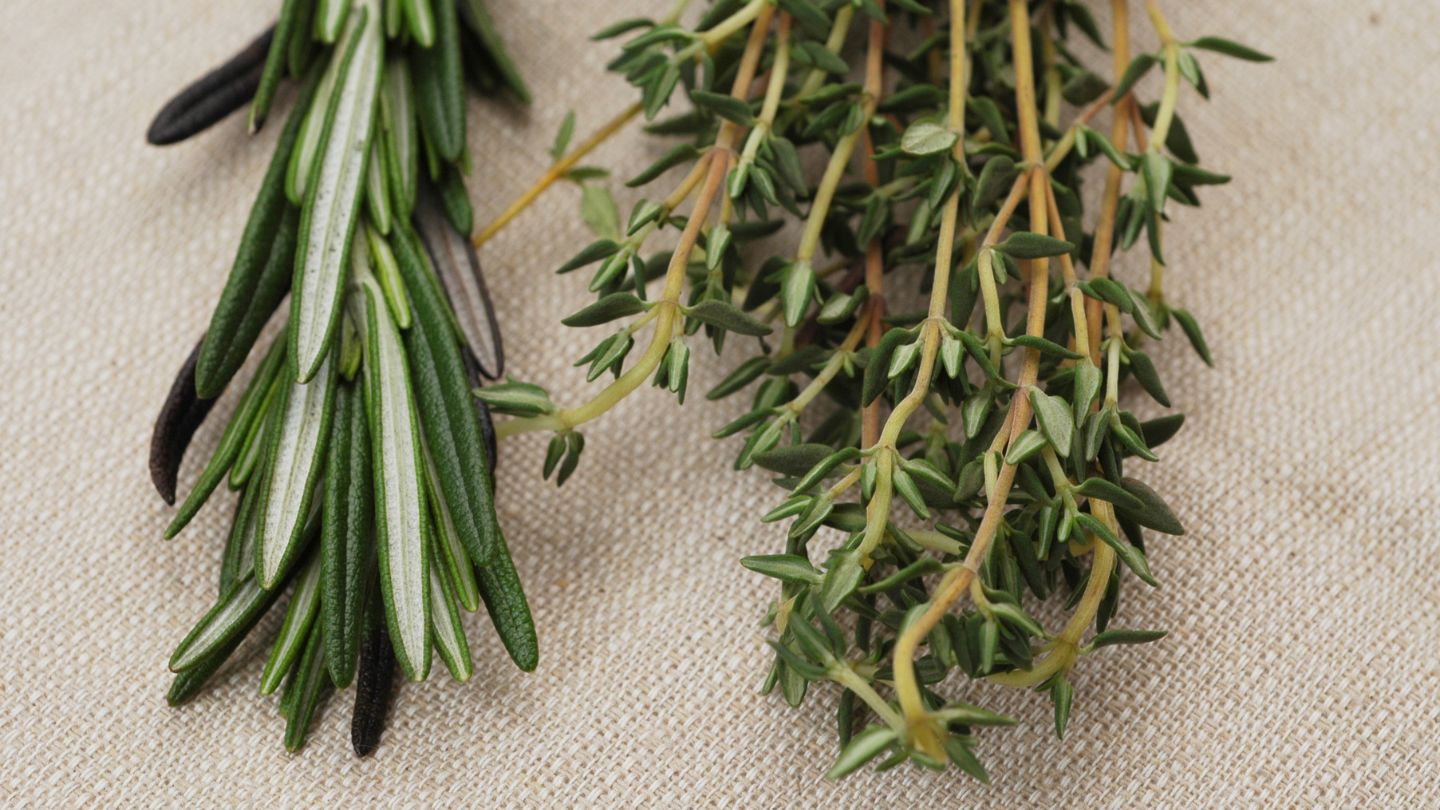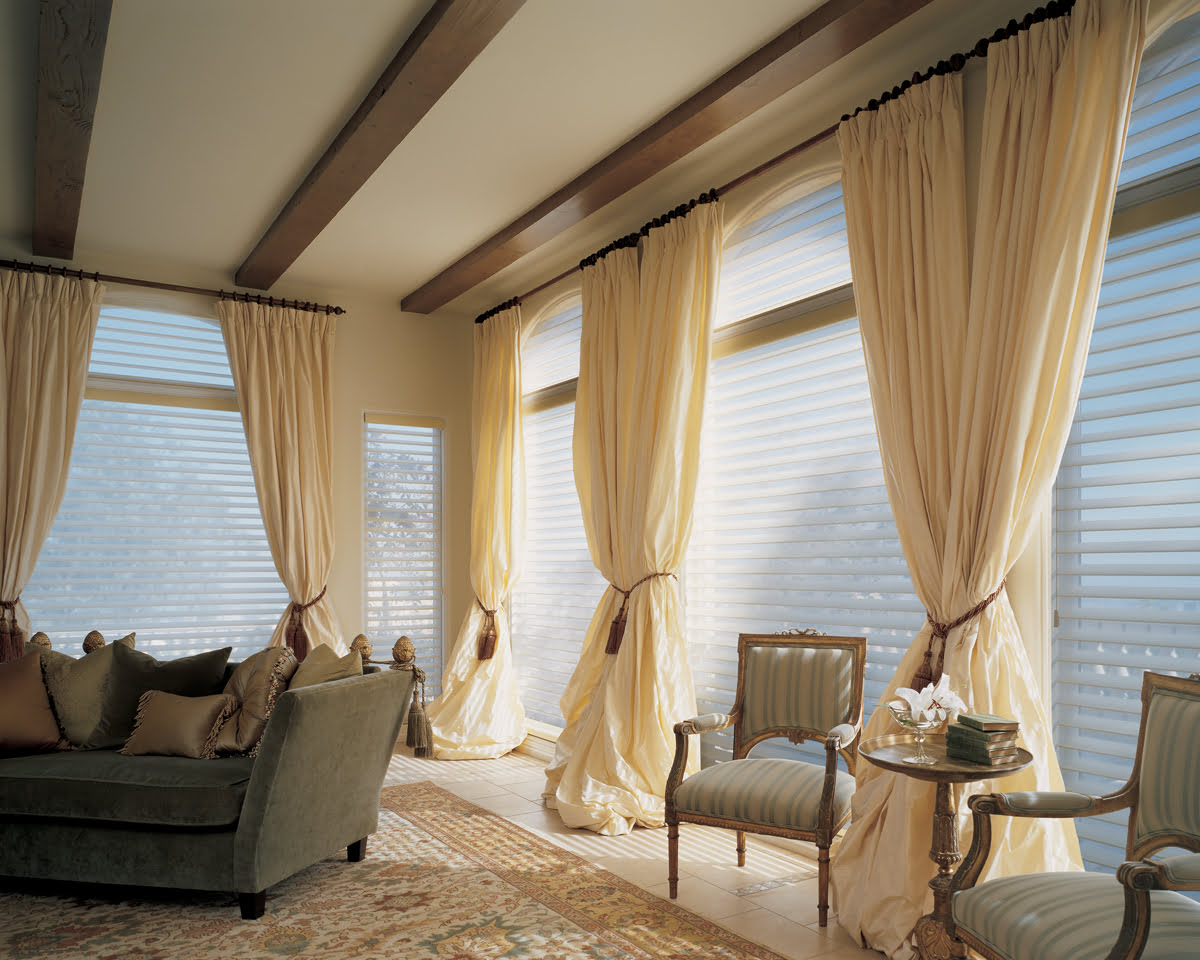Home>Kitchen & Cooking>Kitchen Gadgets & Utensils>What Is The Difference Between Silverware And Flatware


Kitchen Gadgets & Utensils
What Is The Difference Between Silverware And Flatware
Published: February 1, 2024
Discover the nuances between silverware and flatware in the kitchen gadgets and utensils category. Learn about their uses and differences to elevate your dining experience.
(Many of the links in this article redirect to a specific reviewed product. Your purchase of these products through affiliate links helps to generate commission for Storables.com, at no extra cost. Learn more)
Definition of Silverware
Silverware refers to household utensils, such as cutlery and serving pieces, made from silver or silver-plated materials. These items are essential components of table settings and are used for dining and serving food. Silverware is renowned for its elegance, durability, and timeless appeal, making it a cherished possession in many households.
The term "silverware" is often used interchangeably with "flatware," but there is a subtle distinction between the two. While silverware specifically denotes items made from silver or silver-plated materials, flatware encompasses a broader range of utensils, including those made from stainless steel, gold, or other metals. Therefore, silverware represents a subset of the broader category of flatware.
In essence, silverware embodies a sense of sophistication and tradition, reflecting the artistry and craftsmanship involved in its creation. From intricately designed silver spoons to ornate serving platters, silverware exudes a sense of refinement that elevates the dining experience. Its significance extends beyond mere functionality, as it often holds sentimental value, passed down through generations as cherished heirlooms.
The allure of silverware lies not only in its aesthetic appeal but also in its practical utility. The inherent properties of silver, such as its antimicrobial characteristics and resistance to corrosion, contribute to its suitability for culinary use. Additionally, the weight and balance of silverware enhance the dining experience, adding a tactile dimension to the act of eating.
In contemporary usage, the term "silverware" has expanded to include items crafted from alternative materials that mimic the appearance of silver, offering a more accessible option for those seeking the elegance of silver without the associated cost. This evolution has broadened the appeal of silverware, making it attainable for a wider audience while preserving its timeless charm.
In summary, silverware embodies a rich legacy of artisanship, elegance, and functionality, serving as a symbol of refined dining and cultural heritage. Its enduring allure continues to captivate enthusiasts and connoisseurs, ensuring that the tradition of silverware remains an integral part of the culinary and aesthetic experience.
Key Takeaways:
- Silverware vs. Flatware: Silverware is made from silver or silver-plated materials, while flatware includes a broader range of materials like stainless steel and gold. Both add elegance and functionality to dining experiences.
- Historical Significance: Silverware and flatware have rich historical significance, reflecting cultural values and artistic expression throughout ancient civilizations to modern eras. They embody the artistry and traditions of dining customs.
Definition of Flatware
Flatware encompasses a diverse array of dining and serving utensils, ranging from everyday cutlery to specialized serving pieces, designed to facilitate the consumption and presentation of food. Unlike silverware, which specifically denotes items made from silver or silver-plated materials, flatware encompasses a broader spectrum of materials, including stainless steel, gold, and various alloys. This expansive definition reflects the versatility and practicality of flatware, making it an indispensable component of table settings and culinary experiences worldwide.
The term "flatware" derives from the flat, slender profile of many utensils within this category, distinguishing them from bulkier kitchen implements. This characteristic design not only enhances their functionality but also contributes to their aesthetic appeal, as flatware often serves as a visual and tactile extension of the dining experience. From the sleek contours of dinner knives to the graceful curves of serving forks, flatware embodies a harmonious blend of form and function, elevating the act of dining to a multisensory experience.
Flatware encompasses a wide range of utensils, each serving a specific purpose in the context of dining and food service. This includes essential cutlery items such as knives, forks, and spoons, which form the foundation of table settings and are indispensable tools for enjoying a wide variety of culinary creations. Additionally, flatware extends to encompass specialized serving pieces, such as salad forks, butter knives, and serving spoons, designed to facilitate the efficient and elegant presentation of dishes during meals and gatherings.
The materials used in flatware production are diverse, reflecting a blend of tradition, innovation, and practicality. Stainless steel, renowned for its durability and corrosion resistance, is a prevalent choice for modern flatware, offering a balance of functionality and affordability. Other materials, such as gold-plated and titanium-coated options, cater to diverse aesthetic preferences and design sensibilities, adding a touch of luxury and individuality to table settings.
In essence, flatware represents a fusion of culinary artistry, practicality, and aesthetic expression, embodying the evolving traditions and cultural nuances of dining. Its significance extends beyond mere utility, as flatware plays a pivotal role in shaping the dining experience, fostering conviviality, and reflecting the nuances of culinary culture. As a result, flatware stands as a testament to the enduring intersection of functionality and artistry, enriching the rituals and pleasures of dining across diverse culinary landscapes.
Materials Used in Silverware
The materials used in the creation of silverware play a pivotal role in defining its allure, durability, and overall aesthetic appeal. Traditionally, silverware has been crafted from sterling silver, an alloy composed of 92.5% silver and 7.5% of other metals, such as copper, to enhance its strength and durability. This composition imbues silverware with a lustrous sheen and a timeless elegance, making it a coveted choice for formal dining occasions and special gatherings.
In addition to sterling silver, silver-plated materials are also commonly utilized in the production of silverware. Silver-plating involves applying a thin layer of silver onto a base metal, such as brass or copper, through a process known as electroplating. This technique allows manufacturers to achieve the luxurious appearance of silver while utilizing a more cost-effective base material. Silver-plated silverware exhibits a captivating brilliance and sophistication, making it a versatile option for both formal and everyday dining settings.
Furthermore, the incorporation of alternative materials has expanded the scope of silverware, offering a diverse range of options to suit varying preferences and practical considerations. Modern silverware may feature stainless steel components, providing enhanced durability and resistance to tarnishing, while retaining the aesthetic appeal reminiscent of traditional silverware. This fusion of materials enables the creation of versatile and resilient silverware that can withstand the rigors of daily use without compromising on elegance and visual appeal.
Moreover, the advent of contemporary design trends has spurred the utilization of innovative materials, such as titanium and gold accents, in the crafting of silverware. These materials infuse silverware with a modern and luxurious touch, catering to evolving aesthetic sensibilities and design preferences. The incorporation of these materials not only expands the creative possibilities for silverware but also allows for the expression of individuality and style in table settings, adding a distinctive flair to dining experiences.
In essence, the materials used in silverware production encompass a rich tapestry of tradition, innovation, and practicality, reflecting the evolution of culinary culture and design aesthetics. Whether crafted from sterling silver, silver-plated alloys, or contemporary materials, silverware continues to captivate enthusiasts with its timeless charm and enduring appeal, serving as a testament to the artistry and craftsmanship inherent in the creation of dining essentials.
Materials Used in Flatware
The materials used in the creation of flatware play a pivotal role in defining its allure, durability, and overall aesthetic appeal. Traditionally, flatware has been crafted from stainless steel, a versatile and resilient material renowned for its corrosion resistance and durability. Stainless steel flatware exhibits a lustrous finish and a sleek, modern aesthetic, making it a popular choice for both formal and everyday dining settings. The inherent strength of stainless steel ensures that flatware can withstand the rigors of daily use while retaining its visual appeal, making it a practical and enduring option for table settings.
In addition to stainless steel, flatware may also incorporate alternative materials to cater to diverse design preferences and functional requirements. Gold-plated flatware, featuring a thin layer of gold applied to the surface of the utensils, exudes a luxurious and opulent charm, adding a touch of elegance to formal dining occasions. The incorporation of gold accents in flatware design allows for the expression of sophistication and refinement, elevating the visual impact of table settings and culinary presentations.
Furthermore, the utilization of titanium-coated flatware has gained prominence in contemporary dining culture, offering a blend of durability and distinctive aesthetics. Titanium coating enhances the resilience of flatware, providing increased resistance to scratches and wear, while introducing a contemporary and stylish element to table settings. This innovative approach to flatware design reflects the evolving preferences of modern consumers, who seek a harmonious fusion of practicality and visual appeal in their dining essentials.
Moreover, flatware crafted from alternative metals, such as copper or bronze, presents unique design possibilities, infusing table settings with a rustic and artisanal ambiance. These materials lend themselves to intricate detailing and artisanal craftsmanship, adding a touch of warmth and character to dining experiences. The incorporation of alternative metals in flatware design underscores the diversity and creativity inherent in culinary culture, offering a rich tapestry of options to suit varied aesthetic sensibilities.
In essence, the materials used in flatware production encompass a diverse spectrum of traditional and contemporary elements, reflecting the evolving landscape of design, functionality, and aesthetic expression. Whether crafted from stainless steel, gold-plated accents, titanium coatings, or alternative metals, flatware continues to captivate enthusiasts with its versatility, durability, and timeless appeal, serving as a testament to the artistry and innovation inherent in the creation of essential dining utensils.
Types of Silverware
1. Dinner Forks
Dinner forks are essential components of silverware, featuring a sturdy and elongated design suitable for main course meals. They typically exhibit four tines, or prongs, allowing for efficient piercing and lifting of food. The elegant silhouette of dinner forks complements formal table settings, adding a touch of sophistication to dining experiences.
2. Salad Forks
Salad forks are characterized by a slightly smaller size compared to dinner forks, tailored for the consumption of salads and appetizers. Their delicate proportions and refined design make them ideal for lighter fare, reflecting a nuanced approach to dining etiquette and culinary presentation.
3. Dinner Knives
Dinner knives form an integral part of silverware, featuring a robust blade and a balanced handle for effortless cutting and slicing. Their versatile design accommodates a wide range of culinary creations, from tender meats to hearty vegetables, enhancing the dining experience with their functional elegance.
4. Soup Spoons
Soup spoons are distinguished by their rounded bowl and deep profile, facilitating the consumption of soups, stews, and broths. Their ergonomic design ensures optimal fluid retention and comfortable handling, allowing diners to savor comforting soups with ease and grace.
5. Teaspoons
Teaspoons embody a versatile and dainty charm, serving as indispensable companions for enjoying tea, coffee, and desserts. Their diminutive size and delicate construction make them ideal for stirring beverages and savoring delectable confections, adding a whimsical touch to table settings.
6. Serving Spoons
Serving spoons play a pivotal role in culinary presentations, featuring a generous bowl and a long handle for effortless serving of side dishes, sauces, and condiments. Their practical design and graceful form contribute to the seamless orchestration of dining experiences, enhancing the art of sharing and communal dining.
7. Butter Knives
Butter knives exhibit a distinctive silhouette, characterized by a blunt edge and a rounded tip, tailored for spreading butter and soft spreads with precision. Their purposeful design and refined aesthetics elevate the act of buttering bread and enhancing the flavors of artisanal breads and pastries.
8. Serving Forks
Serving forks embody a robust and elegant demeanor, featuring sturdy tines and a substantial handle for securing and serving meats, vegetables, and hearty entrees. Their commanding presence and functional design accentuate the art of carving and presenting culinary masterpieces, adding a sense of ceremony to dining occasions.
9. Sugar Spoons
Sugar spoons exude a delicate and ornate allure, designed for gracefully portioning and stirring sugar in beverages and culinary creations. Their intricate detailing and petite dimensions infuse table settings with a refined and genteel ambiance, enhancing the ritual of sweetening and savoring beverages.
10. Cake Servers
Cake servers epitomize grace and precision, featuring a serrated edge and a sleek handle for effortlessly portioning and serving cakes and pastries. Their refined craftsmanship and ergonomic design elevate the ceremonial act of cutting and presenting delectable desserts, adding a touch of elegance to celebratory occasions.
The diverse array of silverware types reflects the nuanced artistry and practicality inherent in dining essentials, enriching culinary experiences with their timeless elegance and functional versatility.
Types of Flatware
1. Dinner Knives
Dinner knives are essential components of flatware, featuring a robust blade and a balanced handle for effortless cutting and slicing. Their versatile design accommodates a wide range of culinary creations, from tender meats to hearty vegetables, enhancing the dining experience with their functional elegance.
2. Dinner Forks
Dinner forks are indispensable elements of flatware, characterized by a sturdy and elongated design suitable for main course meals. They typically exhibit four tines, or prongs, allowing for efficient piercing and lifting of food. The elegant silhouette of dinner forks complements formal table settings, adding a touch of sophistication to dining experiences.
3. Soup Spoons
Soup spoons are distinguished by their rounded bowl and deep profile, facilitating the consumption of soups, stews, and broths. Their ergonomic design ensures optimal fluid retention and comfortable handling, allowing diners to savor comforting soups with ease and grace.
4. Salad Forks
Salad forks feature a slightly smaller size compared to dinner forks, tailored for the consumption of salads and appetizers. Their delicate proportions and refined design make them ideal for lighter fare, reflecting a nuanced approach to dining etiquette and culinary presentation.
5. Teaspoons
Teaspoons embody a versatile and dainty charm, serving as indispensable companions for enjoying tea, coffee, and desserts. Their diminutive size and delicate construction make them ideal for stirring beverages and savoring delectable confections, adding a whimsical touch to table settings.
6. Serving Spoons
Serving spoons play a pivotal role in culinary presentations, featuring a generous bowl and a long handle for effortless serving of side dishes, sauces, and condiments. Their practical design and graceful form contribute to the seamless orchestration of dining experiences, enhancing the art of sharing and communal dining.
7. Butter Knives
Butter knives exhibit a distinctive silhouette, characterized by a blunt edge and a rounded tip, tailored for spreading butter and soft spreads with precision. Their purposeful design and refined aesthetics elevate the act of buttering bread and enhancing the flavors of artisanal breads and pastries.
8. Serving Forks
Serving forks embody a robust and elegant demeanor, featuring sturdy tines and a substantial handle for securing and serving meats, vegetables, and hearty entrees. Their commanding presence and functional design accentuate the art of carving and presenting culinary masterpieces, adding a sense of ceremony to dining occasions.
9. Sugar Spoons
Sugar spoons exude a delicate and ornate allure, designed for gracefully portioning and stirring sugar in beverages and culinary creations. Their intricate detailing and petite dimensions infuse table settings with a refined and genteel ambiance, enhancing the ritual of sweetening and savoring beverages.
10. Cake Servers
Cake servers epitomize grace and precision, featuring a serrated edge and a sleek handle for effortlessly portioning and serving cakes and pastries. Their refined craftsmanship and ergonomic design elevate the ceremonial act of cutting and presenting delectable desserts, adding a touch of elegance to celebratory occasions.
The diverse array of flatware types reflects the nuanced artistry and practicality inherent in dining essentials, enriching culinary experiences with their timeless elegance and functional versatility.
Historical Significance of Silverware
The historical significance of silverware transcends its utilitarian function, encompassing cultural, social, and artistic dimensions that have shaped the evolution of dining customs and craftsmanship. Dating back to ancient civilizations, the use of silverware has been intertwined with the rituals of dining, reflecting the values and customs of diverse societies throughout history.
In ancient Mesopotamia and Egypt, silver and gold utensils were revered as symbols of wealth and status, reserved for the elite and nobility. These precious metal utensils not only served practical purposes but also conveyed social hierarchy and opulence, underscoring the significance of silverware as a marker of prestige and refinement.
During the Middle Ages and the Renaissance, silverware assumed a central role in courtly feasts and banquets, where elaborate table settings and ornate silver utensils became emblematic of grandeur and hospitality. The craftsmanship of silversmiths flourished during this period, giving rise to intricate designs and embellishments that adorned silverware, reflecting the artistic sensibilities and cultural values of the era.
The Victorian era witnessed a proliferation of silverware as an essential component of domestic life, with elaborate tea services, flatware sets, and serving pieces becoming synonymous with genteel living and social gatherings. The meticulous etiquette surrounding the use of silverware reflected the refinement and decorum expected in Victorian society, underscoring the role of silverware in shaping social interactions and dining rituals.
In the modern era, silverware continues to evoke a sense of tradition and elegance, serving as a link to the customs and aesthetics of bygone eras. While contemporary lifestyles have introduced alternative materials and design trends, the allure of silverware endures as a testament to the enduring legacy of craftsmanship and cultural significance.
The historical significance of silverware extends beyond its material composition, encompassing the narratives of human creativity, social customs, and artistic expression. As a tangible link to the past, silverware embodies the rich tapestry of culinary heritage and societal values, offering a glimpse into the evolving rituals and aesthetics of dining across civilizations.
Historical Significance of Flatware
The historical significance of flatware transcends its utilitarian function, encompassing cultural, social, and artistic dimensions that have shaped the evolution of dining customs and craftsmanship. Dating back to ancient civilizations, the use of flatware has been intertwined with the rituals of dining, reflecting the values and customs of diverse societies throughout history.
In ancient civilizations such as Mesopotamia and Egypt, the use of flatware, albeit in simpler forms, was prevalent among the elite and nobility. The emergence of flatware as a symbol of status and refinement can be traced to these early societies, where the possession of intricately crafted utensils denoted wealth and social standing.
During the Middle Ages and the Renaissance, flatware assumed a central role in courtly feasts and banquets, where elaborate table settings and ornate utensils became emblematic of grandeur and hospitality. The craftsmanship of artisans flourished during this period, giving rise to intricate designs and embellishments that adorned flatware, reflecting the artistic sensibilities and cultural values of the era.
The Victorian era witnessed a proliferation of flatware as an essential component of domestic life, with elaborate flatware sets, serving pieces, and specialized utensils becoming synonymous with genteel living and social gatherings. The meticulous etiquette surrounding the use of flatware reflected the refinement and decorum expected in Victorian society, underscoring the role of flatware in shaping social interactions and dining rituals.
In the modern era, flatware continues to evoke a sense of tradition and elegance, serving as a link to the customs and aesthetics of bygone eras. While contemporary lifestyles have introduced alternative materials and design trends, the allure of flatware endures as a testament to the enduring legacy of craftsmanship and cultural significance.
The historical significance of flatware extends beyond its material composition, encompassing the narratives of human creativity, social customs, and artistic expression. As a tangible link to the past, flatware embodies the rich tapestry of culinary heritage and societal values, offering a glimpse into the evolving rituals and aesthetics of dining across civilizations.
Usage and Etiquette of Silverware
The usage and etiquette of silverware encompass a rich tapestry of traditions, practical guidelines, and social nuances that contribute to the art of dining and culinary refinement. Understanding the proper handling and placement of silverware is essential for navigating formal dining settings and upholding the conventions of etiquette. Whether hosting a formal dinner party or attending an elegant soirée, mastering the intricacies of silverware usage enhances the dining experience and reflects a cultivated sense of decorum.
1. Placement and Arrangement
The placement of silverware on the table follows established conventions that denote the sequence of courses and guide diners through the meal. In formal settings, the arrangement of silverware is meticulously orchestrated, with specific utensils positioned in a precise order to correspond with each course. From the outermost utensils designated for appetizers to the innermost implements for the main course and dessert, the placement of silverware communicates a sense of order and sophistication.
2. Handling and Usage
The proper handling of silverware reflects a blend of practicality and grace, emphasizing the importance of using utensils with finesse and precision. When dining, the appropriate use of forks, knives, and spoons contributes to the seamless enjoyment of each dish, allowing diners to savor the flavors and textures with ease. Adhering to established techniques for cutting, spearing, and conveying food with silverware enhances the dining experience and underscores the significance of culinary rituals.
3. Etiquette and Gestures
Etiquette surrounding the use of silverware encompasses a range of subtle gestures and protocols that convey respect and consideration for fellow diners. From the discreet placement of used utensils on the plate to the graceful handling of serving implements, observing proper etiquette fosters an atmosphere of refinement and conviviality. Additionally, the art of signaling with silverware, such as resting utensils to indicate pauses between courses, adds a layer of nonverbal communication that enhances the flow of the dining experience.
4. Care and Maintenance
The care and maintenance of silverware are integral to preserving its luster and longevity. Proper cleaning, storage, and handling of silver utensils ensure that they retain their exquisite appearance and functional integrity. Whether handwashing delicate silverware or storing it in protective cases to prevent tarnishing, conscientious maintenance practices safeguard the enduring beauty and value of silverware for generations to come.
In essence, the usage and etiquette of silverware embody a harmonious blend of tradition, practicality, and social grace, enriching the dining experience with a sense of refinement and cultural heritage. By embracing the nuances of silverware etiquette, individuals can partake in the timeless rituals of dining with elegance and poise, honoring the legacy of culinary customs and social rituals.
Usage and Etiquette of Flatware
The usage and etiquette of flatware encompass a rich tapestry of traditions, practical guidelines, and social nuances that contribute to the art of dining and culinary refinement. Understanding the proper handling and placement of flatware is essential for navigating formal dining settings and upholding the conventions of etiquette. Whether hosting a formal dinner party or attending an elegant soirée, mastering the intricacies of flatware usage enhances the dining experience and reflects a cultivated sense of decorum.
Placement and Arrangement
The placement of flatware on the table follows established conventions that denote the sequence of courses and guide diners through the meal. In formal settings, the arrangement of flatware is meticulously orchestrated, with specific utensils positioned in a precise order to correspond with each course. From the outermost utensils designated for appetizers to the innermost implements for the main course and dessert, the placement of flatware communicates a sense of order and sophistication.
Handling and Usage
The proper handling of flatware reflects a blend of practicality and grace, emphasizing the importance of using utensils with finesse and precision. When dining, the appropriate use of forks, knives, and spoons contributes to the seamless enjoyment of each dish, allowing diners to savor the flavors and textures with ease. Adhering to established techniques for cutting, spearing, and conveying food with flatware enhances the dining experience and underscores the significance of culinary rituals.
Etiquette and Gestures
Etiquette surrounding the use of flatware encompasses a range of subtle gestures and protocols that convey respect and consideration for fellow diners. From the discreet placement of used utensils on the plate to the graceful handling of serving implements, observing proper etiquette fosters an atmosphere of refinement and conviviality. Additionally, the art of signaling with flatware, such as resting utensils to indicate pauses between courses, adds a layer of nonverbal communication that enhances the flow of the dining experience.
Care and Maintenance
The care and maintenance of flatware are integral to preserving its luster and longevity. Proper cleaning, storage, and handling of flatware ensure that they retain their exquisite appearance and functional integrity. Whether handwashing delicate flatware or storing it in protective cases to prevent tarnishing, conscientious maintenance practices safeguard the enduring beauty and value of flatware for generations to come.
In essence, the usage and etiquette of flatware embody a harmonious blend of tradition, practicality, and social grace, enriching the dining experience with a sense of refinement and cultural heritage. By embracing the nuances of flatware etiquette, individuals can partake in the timeless rituals of dining with elegance and poise, honoring the legacy of culinary customs and social rituals.
Frequently Asked Questions about What Is The Difference Between Silverware And Flatware
Was this page helpful?
At Storables.com, we guarantee accurate and reliable information. Our content, validated by Expert Board Contributors, is crafted following stringent Editorial Policies. We're committed to providing you with well-researched, expert-backed insights for all your informational needs.







0 thoughts on “What Is The Difference Between Silverware And Flatware”